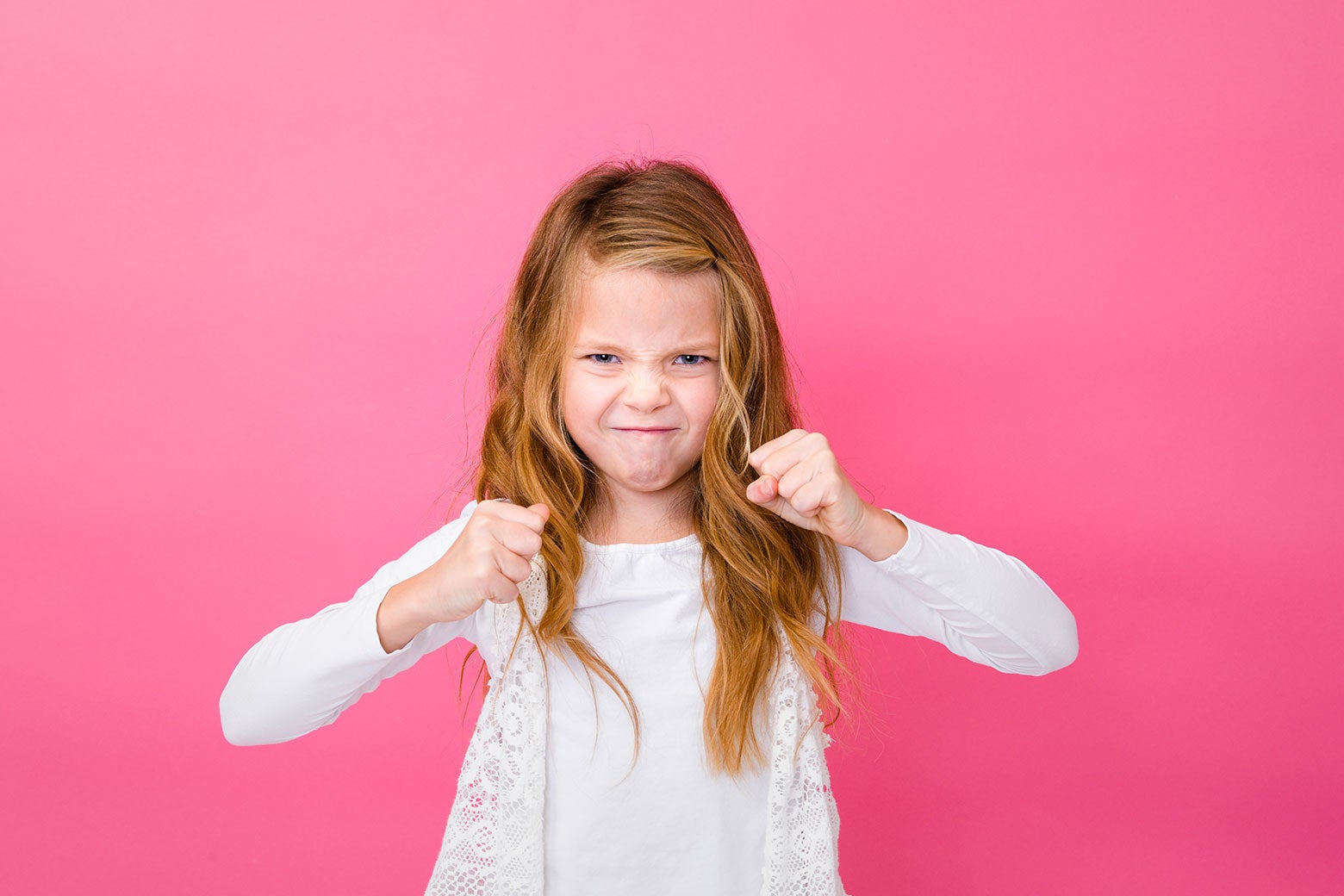The parents never hit their child (back), by the way, only she may hit them if she asks, and is allowed to.
Two excerpts that explain the underlying philosophy:
In the world, Nic points out, women are largely on the receiving end of violence, and in his family that was contrasted with his mom, who would teach the kids judo and jujitsu techniques. His aunt was a national judo champion, and the best judoka in the family. People would come to spar with the family, and they would be paired with his aunt, who is 5-foot-4 on a good day. He grew up seeing pictures of her throwing 200-pound men, their heels flying in the air. Then he would see other people’s families, in which violence was just framed as a negative, end of story.
Margo wants some of Nic’s female relatives’ confidence for our daughter—whether or not she wants to be a martial artist, Margo wants her to be physically prepared for life. Margo has felt so unprepared physically for so many scenarios she’s found herself in, starting with being a young woman in New York City, getting grabbed and groped and followed home and jerked off to on the subway. She wonders how she could have responded differently to all those incidents if she’d had a practice of physical mastery that wasn’t dependent on size or brute strength.
After a lifetime of seeing those dynamics, Nic wants the same thing for his children that he was given: the power to protect themselves and the people around them, and the knowledge to be able to know what does and doesn’t warrant a physical reaction. “I give them a space in the home to practice learning those parts of themselves,” he says, “so if they are in a situation, they are not in that space for the first time.”
“I just want to cultivate children who can protect themselves.”
I like that it involved a girl in this case, but it could also allow boys to still fight eachother as a form of consensual play, and accepting "no" for an answer. Just saying "all violence is bad" can lead to problems down the line when they can no longer control themselves and have zero experience.
Checks out.
Hardest part of onboarding women in to boffer larps was that most women were trained their whole life not to hit people and definitely not run around whooping and hollering and cussing in dead languages smacking people with (foam) swords as hard as they can.
We used to more or less just hand people, men, women, enbies, everyone, a boffer sword and say "I want you to hit me as hard as you can because one of the first things we need you to learn is that these boffers we use are safe, and that under any normal circumstance you can't hurt someone with them." And we'd just tell them yeah, great, that was good, hit me again, hit me again. See how it stings, I wince a little, but there's no mark and no bruise? I'm fine, you're not hurting me, this is play, this is fun, you're not doing anything wrong by being physical and aggressive.
And then, usually, about three hours later, we'd have the "Please don't try to actually kill your fellow larpers I know you're drunk on the power of violence but putting your feet on someone's shoulder and trying to twist their head off is not a legal move. Also please put your shirt back on it's not our rule we just don't want to deal with the park police." And usually folks would find a balance point between socially acceptable passivity and shield-chewing berserker rage.
Turns out; Women are dangerous as fuck. Yeah, not pound for pound as strong as men, and a fat lot of luck that will do you when someone pool-cues a spear through your ribs with a full extension lunge from eight feet away.
Civilization is only three meals away from barbarism, or twenty minutes of running around in the park with a foam bat yelling cusses.
That is not what's going on. They teach her that violence is allowed only in rare cases, and not recklessly or disproportionately. Read the article, please.
As a young boy with bullies, being picked on, [Nic, the daughter's father] was taught not to use martial arts until it was absolutely necessary. If an older kid was being physical with other kids and attempted to do so with him, he was able to respond appropriately and not preemptively. “Right time, right action,” Nic says. He saw situations where people around him got into conflict and reacted early with violence, and then they’d just end up fighting. Because even as a child, he knew where those boundaries were—the boundaries between circling and testing conflict, and outright physical aggression—and he was able to verbally deescalate confrontation. Because he wasn’t in a state of fear, he thinks, he was able to maintain a thoughtful process about situations as they unfolded.
With children, consent is a practice—they are literally practicing it, testing the boundaries of what happens when they violate it, checking to make sure it is reciprocal, feeling for all the edges. Sometimes, our kid hits Margo outside the space of permissioned rough play, with all the wild vigor of a still-forming human who cannot always control her urges, who occasionally wants to see what will happen if she just lets her body loose. She screws her face up and swings her arm around to deliver slaps, her tiny body moving so fast that it is difficult to grab hold of her wrists to stop her, like the gentle-parenting gurus Margo favors tend to recommend. This isn’t cruelty or anger, but dysregulation. Sometimes, there doesn’t appear to be any thought involved at all, and when Margo reminds our daughter that it’s not okay to hit like that (“like that” meaning without consent), she looks genuinely startled, as if she has forgotten that we’ve ever talked about any of this. We do our best to respond calmly, to remind her that she has to ask before she hits. She knows that she can always get her boxing gloves and hit her bag if she needs to let off energy. We also model this for her by practicing martial arts in front of her, and demonstrating how we request and receive consent in that context.
She does have boxing gloves, coincidentally, but only for hitting a punching bag "if she needs to let off energy".
Hard agree. If you don't know how to fight you don't get to choose when to fight. If you know how to fight you can choose not to fight.
If you're not dangerous then you're not a pacifist, you're just passive.
With other mammals, when they're little, they play fight a lot. Part of that is learning how to fight, or hunt. Part of it is learning boundaries; How hard can I bite mom before she growls and pushes me away? Okay, that's how hard I can go before a tussle turns in to a bloodletting. We often don't teach kids this. It's just "Don't fight, don't fight, violence is wrong, don't hit people". That's not education, that's ignorance. They'll end up in situations where they think they have to fight because no one told them how to assess a threat, how to decide if they should bluster, run, scream, or throw down. You end up with kids, who don't know stuff, aren't good at emotional regulation, don't have perspective on what violence can achieve and what the consequences are, learning these things from other kids and getting a pretty shitty education.
And; There are no non-combatants in this world. No army will spare you on the basis of age, sex, or fighting ability. You don't get to decide whether your kids are going to fight or not. That's not under your control. Best you can hope for is teach them how to fight and hope that when the time comes they win, and they win easily.
Final thought; Teaching kids when it's okay to hit someone also teaches them when it's not okay to hit someone. And maybe, not always, but sometimes, the first time they get hit they'll say "That's fucked up": and walk away from the relationship. Not every time, there were people trapped in abusive relatinships who could clean the floor with their abusive partner in a straight fight, but it helps.
The world is a horrifyingly violent place wracked by war at every level from the individual to the global. If you want to be a pacifist then first you have to learn how to kill because if you're not making a choice then you're just passive.
Once again, that's not what's being said. She gets reprimanded in those cases.
Sometimes, there doesn’t appear to be any thought involved at all [in her outbursts of "dysregulation"], and when Margo reminds our daughter that it’s not okay to hit like that (“like that” meaning without consent), she looks genuinely startled, as if she has forgotten that we’ve ever talked about any of this. We do our best to respond calmly, to remind her that she has to ask before she hits. She knows that she can always get her boxing gloves and hit her bag if she needs to let off energy. We also model this for her by practicing martial arts in front of her, and demonstrating how we request and receive consent in that context.



